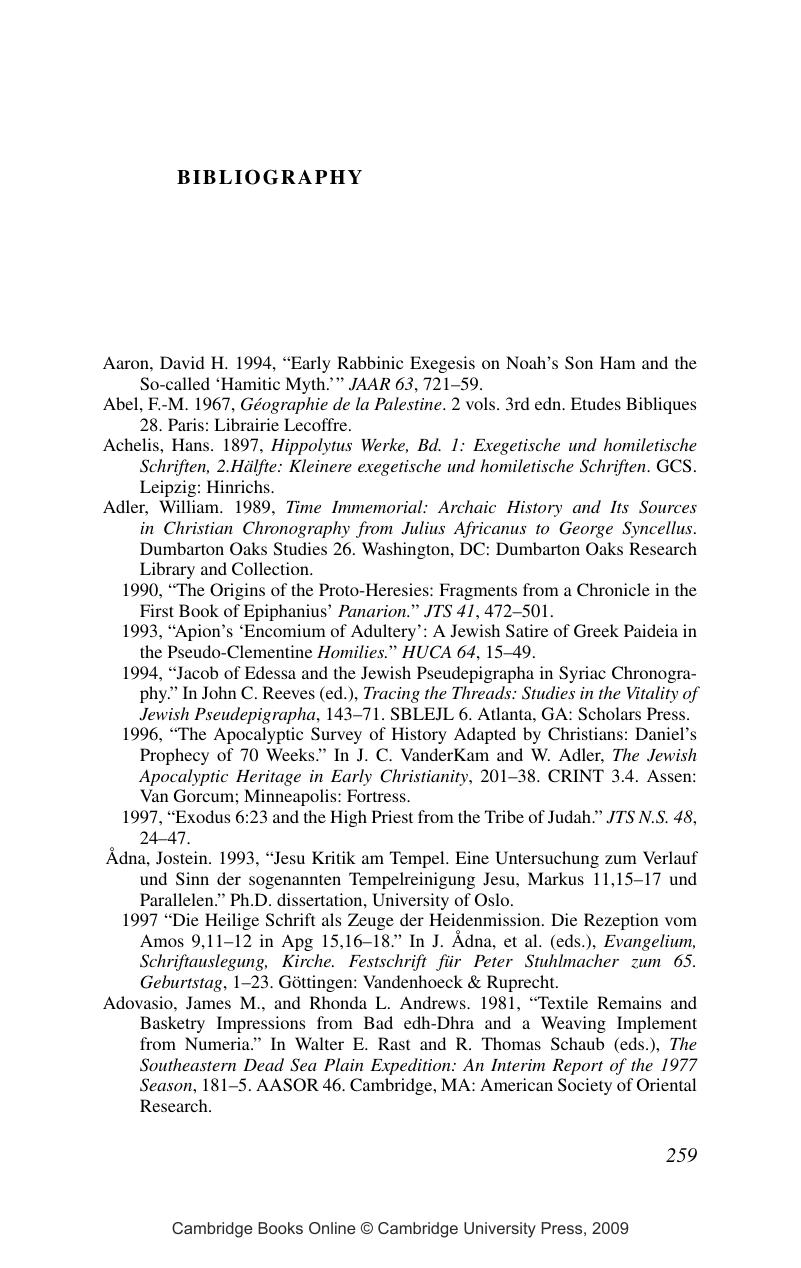Book contents
Bibliography
Published online by Cambridge University Press: 10 December 2009
Summary

- Type
- Chapter
- Information
- Geography in Early Judaism and ChristianityThe Book of Jubilees, pp. 259 - 304Publisher: Cambridge University PressPrint publication year: 2002



